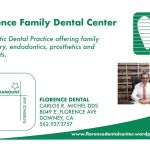The Impact of Oral Health Education in Schools: Why It Matters for Kids
- 1. Introduction
- 2. Why Oral Health Education is Crucial in Schools
- 3. Real-Life Impact of School Oral Health Programs
- 4. Effective Strategies for Oral Health Education
- 5. Conclusion
1. Introduction
Oral health education in schools plays a pivotal role in shaping the dental habits of children. By instilling proper hygiene practices early on, schools can significantly reduce the prevalence of dental issues in the future. With children spending a significant portion of their daily lives in school, it is the ideal place for creating lasting health habits. In this article, we will explore the benefits of integrating oral health education into the school curriculum and how it impacts children’s long-term well-being.
2. Why Oral Health Education is Crucial in Schools
Oral health is essential not just for appearance but also for overall health. Poor dental hygiene can lead to serious health problems like tooth decay, gum disease, and even heart disease. Early education helps children understand the importance of brushing their teeth, flossing, and visiting the dentist regularly. By addressing these topics in school, children become more aware of how to care for their teeth and make healthier choices.
3. Real-Life Impact of School Oral Health Programs
Consider the example of a school district in California that introduced an oral health awareness program. After implementing the program, they noticed a significant decrease in the number of children needing dental treatments. Children were taught about the importance of regular brushing, avoiding sugary snacks, and getting routine checkups. Not only did this reduce dental visits for painful issues, but it also saved the community on healthcare costs in the long run.
4. Effective Strategies for Oral Health Education
To effectively integrate oral health education, schools can adopt a variety of strategies. One popular approach is to invite dental professionals to speak to students, offering demonstrations and hands-on activities. Additionally, interactive lessons, like games and challenges, can make learning fun while reinforcing good habits. Schools can also distribute oral health kits, including toothbrushes and floss, to encourage students to practice their new skills at home.
5. Conclusion
The integration of oral health education in schools offers long-term benefits for children's health and well-being. By raising awareness, teaching good habits, and providing hands-on education, schools can significantly reduce the risk of dental issues among young people. As we continue to prioritize children’s health, oral health programs must be seen as a fundamental part of their education. If you’re looking to improve your child’s oral health, consider exploring oral health programs or educational products that focus on these essential skills.







 Leesville Dental Studio4.0 (473 review)
Leesville Dental Studio4.0 (473 review) Mission City Orthodontics - Dr. Eric L. Babayan4.0 (146 review)
Mission City Orthodontics - Dr. Eric L. Babayan4.0 (146 review) Florence Family Dental Center: Michel, Carlos R DDS4.0 (13 review)
Florence Family Dental Center: Michel, Carlos R DDS4.0 (13 review) Pratte John DDS4.0 (15 review)
Pratte John DDS4.0 (15 review) Nassau Shores Family Dental4.0 (13 review)
Nassau Shores Family Dental4.0 (13 review) Floral Vale Periodontics and Implants, P.C.5.0 (180 review)
Floral Vale Periodontics and Implants, P.C.5.0 (180 review) The Importance of Oral Health Education During Pregnancy for a Healthy Pregnancy
The Importance of Oral Health Education During Pregnancy for a Healthy Pregnancy Best Tips for Brushing Your Teeth Properly for Healthy Gums: Essential Techniques for Oral Health
Best Tips for Brushing Your Teeth Properly for Healthy Gums: Essential Techniques for Oral Health Why Skipping Dental Checkups Can Lead to Bigger Oral Health Problems
Why Skipping Dental Checkups Can Lead to Bigger Oral Health Problems Advantages of Porcelain Dental Restorations
Advantages of Porcelain Dental Restorations How Can Diabetes Cause Tooth and Gum Problems? Preventing and Managing Oral Health Issues
How Can Diabetes Cause Tooth and Gum Problems? Preventing and Managing Oral Health Issues Healthy Habits for Promoting Good Oral Health and Hygiene: Tips for a Healthy Smile
Healthy Habits for Promoting Good Oral Health and Hygiene: Tips for a Healthy Smile